Newton
Latest
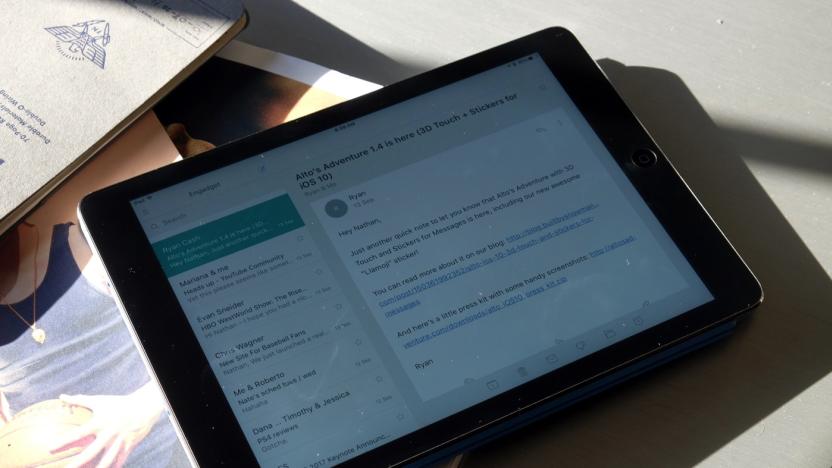
Newton Mail has been saved (again) by two dedicated fans
Email subscription service Newton has been saved again.
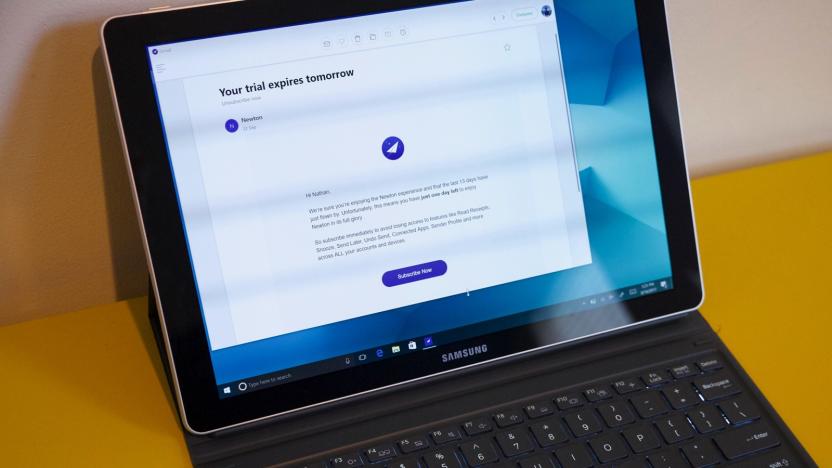
Newton's subscription email service will shut down next month
Newton was the rare email app that worked well on mobile, Windows and Mac, but it really did cost too much. Note the past tense: The company announced today that the email service will shut down on September 25th. The service will not renew monthly subscriptions or allow new sign ups immediately and will offer pro-rated refunds for annual subscribers. Its parent company, CloudMagic, will continue to work on "new and innovative projects," according to CEO Rohit Nadhani.
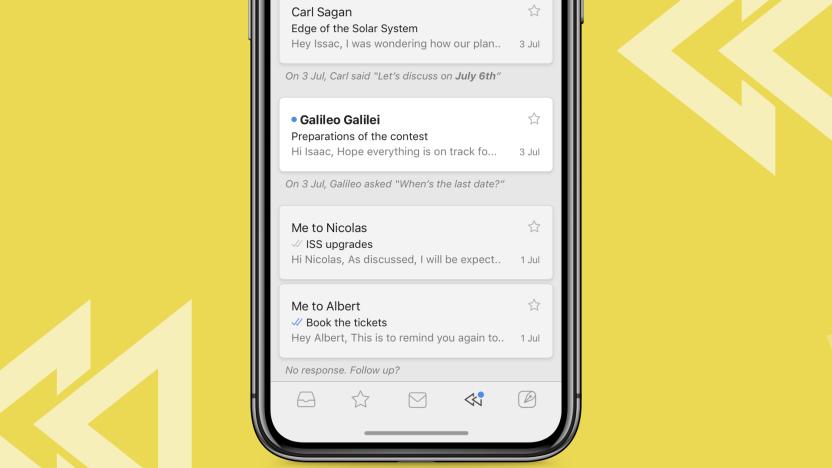
Newton email app surfaces messages it thinks you should reply to
If you've used the new version of Gmail, you're probably familiar with how the service "nudges" you to follow up on emails you might have forgotten about. If you want a feature like that, but prefer to use an app vs. Gmail in your browser, cross-platform email program Newton has a new feature called Recap that should scratch that itch.

Newton email app makes the 'sent' folder unnecessary
The Newton email and calendar apps offer a fairly unique way to deal with those unfortunate but necessary components of modern life. Some of its smarter features include read receipts, the option to recall a sent email, one-click unsubscribe from newsletters, the ability to hook up apps like Todoist, Pocket, Trello and Asana, send-later scheduling and more. Today, the Newton team is making a seemingly small but potentially useful change to the way sent emails are handled. Specifically, Newton is getting rid of the sent email folder entirely.

Newton's simple-is-better email app gets a calendar counterpart
The Newton app is a quality (if pricey) email client that offers simplicity on the surface and intelligence underneath, but it has at least one glaring flaw: that design philosophy doesn't carry over when you need to check your schedule. The Android app had a calendar feature, but it was bolted on. You might not have to make that trade-off for much longer. The developer has introduced a separate Newton Calendar app for iOS, and it continues that less-is-more strategy while adding some thoughtful touches. Most notably, you don't have to wade through the usual forms to add an event -- you tap the date, type in the time and title and you're set.
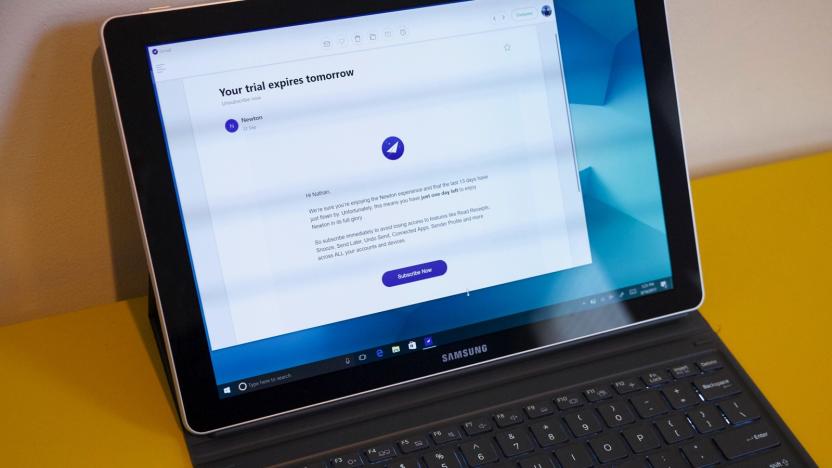
Newton is the rare email app that works great on both Windows and Mac
There are plenty of good third-party Windows email apps out there, but not many of them work across all the platforms you might use. If you're the type of person who jumps between macOS and Windows, Newton (formerly CloudMagic) might be worth a look. Today, the company is bringing its app to Windows -- it should be available on the Windows Store now. With Newton already available on macOS, Android and iOS (not to mention the Apple Watch and Android Wear), it's now one of only a few email apps that works on basically any device.
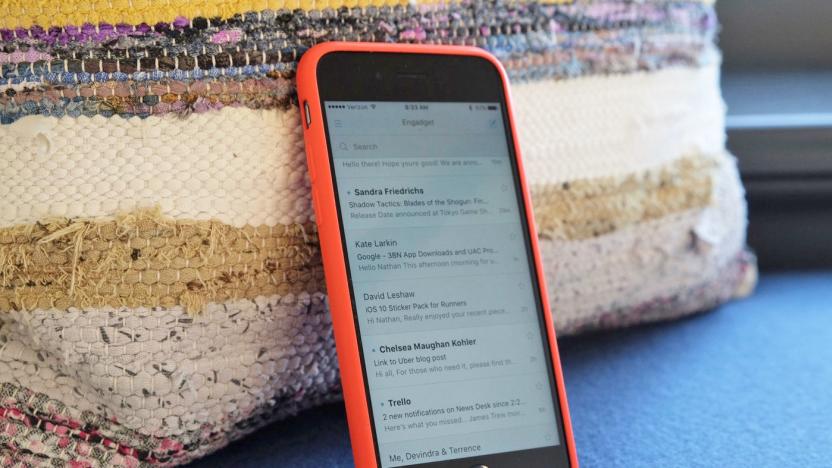
Newton email app keeps things tidy with a Priority Inbox-like tool
If you've wished you had the ability to use Priority Inbox and Tabs features in non-Gmail accounts, well, you're in luck. Newton's Tidy Inbox feature is now available across iOS, Android and Mac devices.

Newton is a great new email app that costs way too much
Despite the frankly ludicrous number of apps in the iOS app store, it's been difficult to find a truly great email app lately. If Outlook isn't to your liking, it quickly gets tough. The official Gmail app is a joke compared to the Android option, Mailbox is dead and options like Airmail and Google's Inbox are nice, but a bit complicated. CloudMagic has been an option worth checking out for a few years now. It's laser-focused on simplicity, but there are some powerful features lurking underneath the surface. Today, the app formerly known as CloudMagic is being reborn as Newton. It's still a deceptively simple affair, but there are some noteworthy new features on board like snoozing messages, read receipts and a send-later function. It works on iOS, Android and on the Mac. But it'll cost you: Newton carries a $50 annual subscription fee, something almost unheard of in apps these days. Is it worth such a large commitment?

The Apple years while Steve Jobs was away
As one of the founders of Apple Computer Inc., Steve Jobs became synonymous with the brand. But his relationship with the company wasn't always so hallowed and harmonious. After internal disputes with Apple's board of directors in 1985, Jobs left the company to pursue other projects, including NeXT Inc. and Pixar. Although he'd piloted the Apple brand from the start, the company carried on without him until his return in 1997 during which time he rebooted the company and turned out "world-changing" products. Join us in the gallery below as we look at some of the hardware that Apple made while Jobs was away.

Sir, I don't think we service that device any longer
In the age of Retina displays and App Stores, Apple's MessagePad -- lovingly referred to as the "Newton," after its OS -- isn't a terribly capable device. It was axed from the company's lineup shortly after Steve Jobs returned to the company, but Apple would return to the personal-gadget-with-a-touchscreen market less than a decade later with the iPhone. Taking one of these now ancient gadgets into an Apple Store would likely elicit a few giggles and blank stares, especially if you were looking for some repairs or troubleshooting. Still, I'm sure there are a few remaining Newton devotees out there, which begs the question: What is the oldest Apple device you've spent the time and money to repair rather than outright replace? Let us know down below! [Photo credit: mac_ivan]

Flickr Find: An oversized iPhone before there even was an iPhone
Love this shot of the Newton MessagePad being used as a phone. It was crafted to be a mock "hands-on" look for the original iPhone, but takes on new meaning now that we are being force-fed rumors that Apple is creating a "bigger" iPhone. Is this really what we will be looking like this time next year? Newton image from Windall Oskay on Flickr. Oskay, along with Lenore Edman and shop cat Zener Diode, founded Evil Mad Scientist Laboratories, a family-owned maker shop responsible for creations such as Super Awesome Silvia's WaterColorBot and edible origami.

This quarter-sized chip platform could power future Android Wear devices
While Intel has backtracked on its "Edison" chip size claims, another Android Wear partner is claiming that its system-on-chip is the size of the proverbial SD card. Imagination Technologies (MIPS) has just revealed the Newton platform based on its MIPS architecture, built by chip-making partner Ingenic. It uses Ingenic's power-sipping, Android-compatible 1GHz JZ4775 CPU (similar to that in the GEAK watch), to help it give smartwatches and other wearables 30 hours or more of battery life. A laundry list of other features is also baked in, like support for up to 3GB RAM, 720p video, WiFi, Bluetooth 4.0, NFC, MEMS sensors, health care sensors and USB support. Device makers can pick and choose those options thanks to the modular design, which also allows for rapid prototyping. In theory, that will help Android Wear hardware makers turn their designs into products more quickly -- and fulfill Google's ambitious product launch timetable.

Time Machines: Apple's attempt to sell the future at CES
Welcome to Time Machines, where we offer up a selection of mechanical oddities, milestone gadgets and unique inventions to test out your tech-history skills. In the weeks leading up to the biggest gadget show on Earth, we'll be offering a special look at relics from CES' past. In the early '90s, Apple CEO John Sculley filled his CES keynote with a sweeping premonition on how computers and consumer electronics would soon merge into tiny, do-everything devices. When he finally took the idea to market, it was innovative, ahead of its time and ultimately disappointing. There's more to the story, though, and it's all waiting for you after the break.

Caturday: Pippin's iMac house
Some cats just hang out on the furniture provided by their owners, others have nice and cozy pet beds. Pippin, however, has one of the best cat domiciles we've seen so far -- a strawberry slot-loading iMac G3 that's been outfitted with some nice cushions. Pippin's owner, Ian Cobb, named his feline companion after Apple's ill-fated gaming console. There's a box for a non-feline Pippin in this photo as well; see that box marked "Atmark"? Ian also has a nice Mac Portable, what appears to be a PowerBook 170, a Newton MessagePad 2000 (or 2100), and an eMate. So this week, you're not only getting treated to a really cute feline, but also one of the best Apple collections I've seen in a long time. We'd love to see photos of your favorite feline soaking up the warmth of an Apple product, chasing a Magic Mouse, or just being a general nuisance while you're attempting to work on your Mac, iPad, or iPhone. Please let us know via our feedback page and please remember that your cat photo has to have some sort of connection to Apple or its products. For security reasons we can't accept inbound attachments, so you should host the photo (Dropbox, Flickr, iPhoto Journals, etc.) and send us the link. Many thanks to Ian Cobb for sharing this photo with us.

Origin Stories: Steve Sande
I certainly didn't start my career with plans to become a blogger and editor at one of the world's most active Apple websites. When I was a child dreaming about a future career path, computer science barely registered on the "What I want to do when I grow up" list since only corporations owned room-sized mainframes at that time and there was no such thing as a home computer. The first time I had any physical contact with a computer was in 8th grade in Aurora, Colorado in the Apollo moon landing year of 1969. The Aurora Public Schools had purchased a Data General Nova (see console photo of a similar model at top of this post) in that year for accounting and scheduling purposes, and some brilliant person came up with the idea of buying some Teletypes that could be used as dialup terminals to allow personnel at the schools to access the main computer remotely. Well, the administrators and teachers at the school weren't all that interested in computers, so guess who started using the Teletypes and Nova to learn how to program in BASIC? The students. Since they wouldn't let us save our programs to paper tape (that would come in about two or three years), any programs we ran were usually quite short out of necessity – we'd type 'em in, run them, try to figure out what the TOO MANY NESTED GOSUBS error meant, and then start all over again. It was fun, but frustrating with no real way to store the programs permanently. In 9th and 10th grade, I was only able to play rarely with the Nova or whatever computer they may have purchased as an upgrade. But when the school announced in 11th grade that the regular algebra class would also be offered in a "computer algebra" version providing access to the school system's minicomputer, I jumped on the opportunity to have a full semester of working with ... the future! Things were a little better at that point. We could save our programs out on paper tape, kind of the "floppy disk" of the era. I think part of the reason we wanted to save to paper tape was that the tape punch created some very good confetti for high school football games... About this time I became very interested in two things; transportation engineering and writing. I had a wonderful high school English teacher by the name of David Faull (still alive and kicking) who really taught me how to write, something I'd need to do in college in those pesky elective courses. I had decided to go into Civil Engineering, and was accepted at the University of Colorado at Boulder. Every engineering student at the time had to take an introductory computer class – CS 101 – in which they were introduced to two things: punch card input and FORTRAN IV. There was nothing worse than sitting down at a keypunch machine with a handwritten FORTRAN coding form, typing in several hundred cards, all of which needed to be read by a machine in order and without typos for your program to run. I can recall hearing of several computer science grad students who had nearly committed suicide after having ultra-long programs scattered to the wind when they accidentally dropped boxes of punch cards... One of my best high school buddies, Rick Brownson, was a student at CU at the same time in the Electrical Engineering department, and I recall that in 1976 he introduced me to an amazing game –- Lunar Lander –- that displayed vector graphics in real time onto a round green-screen terminal. We wasted many a weekend hour playing that game in one of the EE computer labs. Rick also introduced me to the nascent world of personal computing around that time, as he and I soldered chips into a MITS Altair 8800 kit in late 1975. I really wasn't all that impressed with the Altair, since when we finished it there was no way for us to connect it to a display (usually an old TV), and we had no keyboard for it. So we flipped switches on the front of the device to enter 8080 opcodes and then looked at the LEDs to see the results. I remember taking a weekend drive to Albuquerque, New Mexico in 1976 to go to a Altair convention of some sorts; the highlight was getting a pirated copy of Bill Gates' Altair BASIC on paper tape from another attendee. At the time I graduated from engineering school in 1978, word was getting out about Apple, but at the time I really didn't see any reason to buy a computer. Even while I was working in my first job and going to grad school, I refused to buy a computer. When I was able to get a Commodore VIC-20 for about $300 I bought one, then when Commodore reduced the price on the C-64 to about $250 the next week, I returned the VIC-20, got a refund, and picked up a Commodore 64. After a short amount of time I found myself hooked. I bought an Epson printer, got the cassette tape drive, and bought the height of communications technology at the time – a 300 baud modem. I quickly found myself on some of the early bulletin board systems of the time. But the Commodore 64 wasn't a "real computer", so when IBM compatible devices started hitting the market I went out and bought a Sanyo MBC-555 PC clone complete with two floppy drives (a Sanyo MBC-550 with only one floppy is shown below)! This is where I got my first introduction to business software, with WordStar as a word processor and CalcStar as a spreadsheet. At this time, I was working for a natural gas pipeline company called WestGas. The company was a subsidiary of a larger electric and gas utility (Public Service Company of Colorado, now part of Xcel Energy), and as a subsidiary we had of control over our destiny. In the fall of 1983, the Vice President of our company came to me to see if I would perform a study of possible uses for personal computers in our company and create a five-year plan to budget the introduction of those devices, so I jumped to the task. Everything was based on costs and benefits, and a calculated rate of return on the investment in IT. In retrospect, a lot of my numbers were probably quite suspect, as they were based on estimates of time savings that most likely never occurred... The final study saw a need for no more than about 15 PCs over the next five years as well as a handful of dedicated IBM DisplayWriter word processors. About the time that my study was completed, there was a lot of speculation in the computer world about Apple's forthcoming Macintosh. I was interested in seeing one, so a few days after they were introduced my boss and I went over to a Nynex Business Center store to take a look. While the mouse, the bitmapped display, and the 3.5" floppy drive were all amazing, the lack of memory (128K) was a real turnoff. Still, I felt as if I had seen the future, and I vowed to get myself a Mac if they ever built a model with more RAM. Towards the end of the year Apple introduced the 512K "Fat Mac", and the company was doing a "Test Drive A Mac" promotion where you filled out loan paperwork, took a Mac home to use for about three days, and if you decided you wanted to keep it they processed the loan. Having the Mac at home really made me fall in love with it, so in December of 1984 I bought my first Mac. Being enthralled with the Mac, I started lugging it with me to work. By this point I was the supervisor of a group called "Special Projects", and my team was charged with a number of things: regulatory compliance, studies, project management, and now IT. Pretty quickly, my co-workers got began to turn into Mac fans, and I started tweaking the five year plan to buy fewer PCs and more Macs. I was also going to a lot of Mac User Group meetings in those days; that was the place to really try out software, as most everyone would bring boxes of floppies as well as the original disks for new applications they had purchased. Copying was rampant, but I don't remember anyone doing outright pirating; if you tried a program and liked it, you'd end up buying it. That was the case for me in 1985 when I tried out a copy of Aldus Pagemaker (the first "professional" page layout application) and then bought the application. At one point, I bragged to our financial manager that I could use the app to lay out our subsidiary's annual report at a much lower cost than sending it out to a traditional printshop; he called my bluff and for the next month I worked with the very buggy 1.0 software to create the report. In the end, I was successful and the finance department decided to get Macs for everyone. In a few more years, the engineering role ended for me and I was a full-time IT manager. Starting in 1987 and through 1994, I attended Macworld Expo in San Francisco. From about 1990 to 1994, I also went to the Apple WorldWide Developer Conference, which was held in San Jose at that point. These were the years of trying to get a new Mac OS off the ground, the intro of the Newton MessagePad, the MPW vs. CodeWarrior battles, and extremely boring keynotes by such luminaries as Michael Spindler and Gil Amelio. I also spent a lot of time using Pagemaker to create printed newsletters for WestGas and for a number of groups I was a member of. While that was a bit of work that I never really ended up getting paid for, it taught me a lot about design, layout, printing, and writing. From 1986 to 1994, I also ran a Mac bulletin board system known as MAGIC (Mac And [Apple II] GS Information Center). This started off on my original Mac 512, and by the time I quit running the BBS and moved to a website, it was a three-phone-line setup running on two networked Macs Including my favorite Mac of all time, a Mac IIcx. The BBS was the "official site" for the MacinTech Users Group, a MUG that's still going strong to this day. My first website was PDAntic.com, a play on John Sculley's acronym for the Newton – Personal Digital Assistant – and the fact that my wife often refers to me as being pedantic. I chose to run the site with news posts written in a reverse chronological order, which means that I was essentially doing blogging in 1994! I was doing some half-hearted development for the Newton at the time, and still have a working MessagePad 2100. 1995 was the start of a bad period for me personally – our pipeline company was swallowed back into our parent company, and then all of us who had any dealings in information technology were outsourced to IBM's ISSC services group (later IBM Global Services). While I won't go into details, it was the worst part of my career, with incompetent and occasionally unethical managers, a strategy that consisted of trying to do more and more work with fewer employees (with predictable bad results), and the most demoralized staff I've ever seen. I survived for nine years, after which I chose to go out on my own. At the beginning of my time with IBM our client (the company I worked for) had a total of over 1,200 Macs company-wide; by the time I left we were down to a handful in the corporate communications department. One of my first IBM projects in 1996 was to move all of the Mac users to Windows 95 –- I should have quit when I was ordered to do that. One bright spot during the years 1999 through 2006 was my participation in a number of Microsoft's Mobius conferences. These were meetings of those of us who ran mobile-oriented websites, with Microsoft showing off concepts and picking our brains for ideas about UI, built-in applications, and the direction of the mobile world. I also met a number of the top bloggers in the mobile space, including Ryan Block and Peter Rojas, who were both instrumental in starting up Engadget. Peter was one of the co-founders of Weblogs, Inc., the blog network that TUAW was a part of before being purchased by our current owner -- AOL. In 2005 I started my own consulting firm, Raven Solutions, to do Mac consulting and support. I became a member of the Apple Consultant Network (ACN), which helped my business to grow quite quickly. I also started writing books at about this time, creating a book called "Take Control of your iPod: Beyond the Music" that is still for sale from Adam and Tonya Engst's Take Control Books. One top moment about this time was seeing Steve Jobs introduce the iPhone at the 2007 Macworld Expo. That was something I'll never forget, and I have a Nitrozac painting of the event within my field of view in my office. In late 2007 I was on a weekend trip to Vegas with my wife when a friend pointed out that one of my favorite Apple sites –- TUAW –- was accepting applications for freelance writers. I turned in my requisite three sample articles, but didn't hear anything ... until April of 2008. I was on a business trip when I received a call from former TUAWite Scott McNulty, who wondered if I was still interested in being a TUAW blogger. He gave me a test that I remember quite well; I had one hour (sitting in an airport waiting for a flight) to write a news post about a new and completely hypothetical Apple product. I zapped it to him via email with time to spare and was offered the job. Since that time I've become a full-time employee of TUAW parent company AOL, I've met thousands of TUAW readers at Macworld/iWorld and other events, written a number of books (many with fellow TUAW blogger Erica Sadun), and published almost 1.8 million words of blog posts. I love sharing time with TUAW fans every Wednesday afternoon on TUAW TV Live, as well as delivering the daily Apple news on the Daily Update podcast. And when I get to join with my teammates for one of the Sunday night Talkcasts, that's like getting together with family. The only way to describe my life right now is as "blessed." I work with a great team of professionals doing what I love to do the most, writing about a company that has had such a huge effect on the course of my career and my life. I don't know how long this ride will last, but I sincerely hope it's for a long, long time.

Apple abandons Newton trademark
Even though Steve Jobs killed the Newton when he returned to Apple in 1997, the company has maintained the trademark for Apple's first PDA ever since. Well, until earlier this month that is. As noted by PatentlyApple, Apple officially abandoned the Newton trademark on February 12, 2013. The discovery was made when PatentlyApple was searching through trademarks in the Canadian IP office this month. With the abandoning of the Newton trademark, it's likely we will never see another product from Apple called "Newton" again.

Daily Update for February 26, 2013
It's the TUAW Daily Update, your source for Apple news in a convenient audio format. You'll get all the top Apple stories of the day in three to five minutes for a quick review of what's happening in the Apple world. You can listen to today's Apple stories by clicking the inline player (requires Flash) or the non-Flash link below. To subscribe to the podcast for daily listening through iTunes, click here. No Flash? Click here to listen. Subscribe via RSS

Qualcomm tried to get Apple to put a radio in the Newton
Steve Jobs will be forever known for his moving introduction of Apple's first phone in 2007, but history may have been different had Apple worked more closely with Qualcomm in the '90s. According to a report in Venture Beat, Qualcomm courted Apple and tried to get the company to put a cellular radio in the Newton. The Newton could have become Apple's first smartphone, but the company rejected Qualcomm's proposal. Qualcomm, though, knew the future was in cellular technology and foresaw the coming age of mobile devices. Rebuffed by Apple, the chip company approached Palm, which happily accepted the offer. The pair produced the Qualcomm PDQ, an early model smartphone and the first of many PalmOS devices to sport a cellular radio.

Apple Newton celebrates 20 years of eating up Martha
History hasn't been particularly kind to the Newton. Apple's early play at the mobile device market has largely been a source of ridicule, considered a low point in the company's catalog. For every suggestion that the device was ahead its time, there are countless "eat up Martha" jokes. It's not hard to see why -- in spite of tenacious commitment on the part of John Sculley and co., the PDA never really took off, a fact blamed, in part, to hardware and software limitations. To mark the 20th anniversary of the device's on-stage debut, Harry McCracken picked a first-gen MessagePad H1000 and some accessories up on eBay, living with the device for six weeks, as part of an attempt to "reconsider" the Newton. So, how does the product hold up in the harsh light of 2012? At the very least, it offered up the opportunity for great shots like the one above.

A hands-on reconsideration of the Newton
Harry McCracken over at TIME Techland has written a beautiful piece about a 20-year-old piece of technology that was ahead of its time -- Apple's Newton MessagePad. As he notes, it was twenty years ago this week that Apple CEO John Sculley introduced the Newton to the public at a CES show in Chicago. The device wouldn't actually ship until August of 1993 and would fly for only five years before being axed by Steve Jobs upon his triumphant return to Apple, but it made its mark on the world and on Harry McCracken. He never had an opportunity to write a review of the Newton, so he purchased a "new in box" first-generation Newton MessagePad H1000 off of eBay and set to work giving this piece of nostalgic technology a fair review. McCracken found a number of things interesting about his time with the Newton. First, most people ignored the device when he pulled it out in a meeting or on an airplane, dismissing it as just another tablet. Next, he points out that the screen on the original Newton MessagePad was "terrible". Apple did improve it somewhat with a backlight later, but it remained pretty crappy by today's standards. When it came to battery life, McCracken was impressed. As he notes, "Back in the 1990s, people squawked that the MessagePad H1000 drained its four AAA batteries too quickly. I found, however, that I could go for a couple of weeks on a set. In an age of smartphones that conk out after less than one day, that was more than enough to keep me happy." I won't spoil the day for you by reiterating all of McCracken's post, but instead invite you to read his well-written words on the subject. The post was enough to make me dig out my still-working MessagePad 2100, plug it in (the battery pack no longer holds a charge), and take the title shot above comparing my vastly more powerful iPhone 4S to the last of the Newtons. If you have a little bit of time and want a nice trip down memory lane, I also suggest watching the video below, which is from a video that shipped (on a VHS tape) with the original device.











